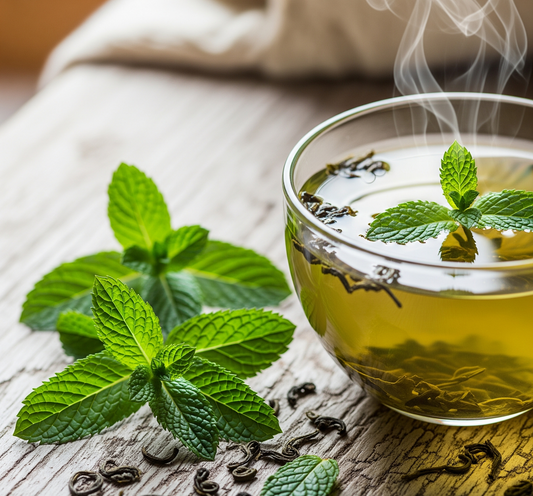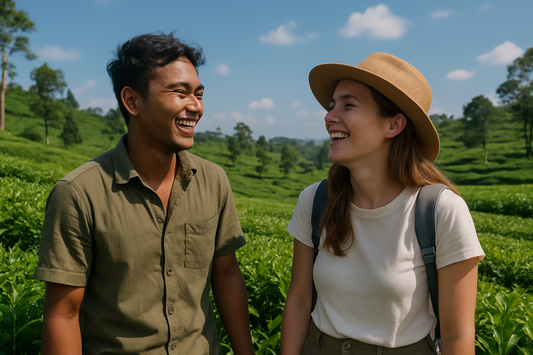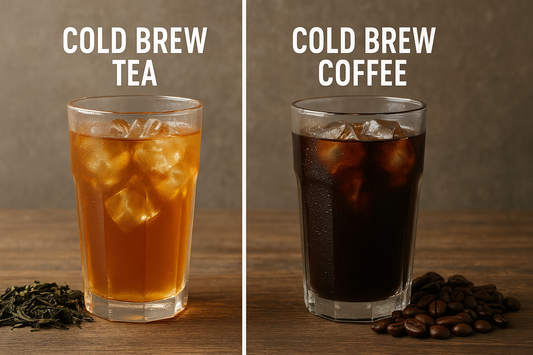The story behind our Rose Label Reserve tea is quite unique. Plucked during the first few harvests of the second flush, this tea is produced only once a year. And owing to the talent of our young, experimental tea-makers, this tea has new and surprising layers of fragrance and flavor every year.
For centuries, tea making has been an art-form and mode of exploration for tea producers. Sadly, all over the world and in the case of Nepal, the creative freedom of talented tea-makers has been restricted by factory demands.
Tea-makers are taught to tune into the harvested leaves and work with the leaves according to how the leaves wish to be molded, bringing out the best of the qualities in the tea leaves. Tea making, in this way, is meant to be a spiritual practice, where tea makers have a soulful and nurturing relationship with their tea leaves.
The reality that I’ve always grappled with, though, is that tea makers are forcibly disconnected from their learnings, and forced to make the same teas over and over again to cater to market demands with no creative freedom in their practice.
We wanted to change that. Working with select tea makers with deep knowledge of tea-making and a passion for experimentation, we have allowed their creativity to shine, giving rise to prized, unique and rare teas like our Rose Label to reach lovers of tea.
My first encounter with Rose Label was in 2022, when I was visiting my family farm on the Kanchanjangha Tea Estate with Chris Macnitt, tea development lead at Starbucks, and Nalin Modha, tea maker and consultant for more than 40 years in Darjeeling and KTE’s factory manager and tea maker almost 21 years ago. A week before our arrival on the farm, on a regular Wednesday, a special lot of tea had arrived at the factory, landing under our youngest producer, Nikesh Gurung’s watchful eye.

An adventure with rare leaves on an unassuming Wednesday
Out of the 700 kgs of tea leaves that had arrived, about 50 kgs of leaves had a shimmering rarity that only Nikesh was able to identify. Understanding what these leaves really wanted to become, he quickly familiarized himself with the unique floral aroma emanating from the leaves during the whitening process.
He let the leaves wither for seven hours, until almost 65% of their moisture had evaporated. Once they had been adequately softened, Nikesh gently rolled the leaves at varying pressures in the rolling machine, delicately bruising the leaves while not allowing them to tear at all.
By now, the 70 kgs of leaves had reduced to about 50 kgs in weight, but the aroma that suffused the factory during the oxidation processes would make one believe that it was 5000 kgs of tea leaves that were being processed.
After finally drying, Nikesh let the leaves rest for the night, excited to see what would become of the special leaves he had so carefully experimented with all night.
Nalin, Chris and Nischal experience the experimental brew
A week passed. Nikesh had kept his experimental rosy leaves under wraps, and little did we know that we would be tasting one of the most exciting brews we’d tasted in a while.
The three of us tasted 30 different teas that day. Most of them were our typical KTE teas, fresh and wonderful, yes, and perfectly made too, but nothing that stood out to us.
Nalin was on his 28th cup of tea. He took his first slurp, and his eyes gleamed with pleasure. He took another huge slurp, and laughed like a child in a candy store. He had finally found the tea he had been looking for.
Similar was Chris’ reaction when he tasted the Rose Label brew. He felt as though he was surrounded by rose meadows. Crazy as it sounds, we sat there for another hour, just refilling and reinfusing this particular tea, talking about this particular plant’s history and its variety of flavor profiles.
This accidental encounter with rose label reserve gave way for us to sell one of the most expensive teas from Nepal.

This year’s twist
Our Rose Label Reserve tea arises from our young producer Nikesh Gurung’s ingenuity and a special tea plant from our garden, the Bannockburn-157 cultivar. This year, we carefully isolated this plant to produce an even harvest and production. What’s more, KTE’s own distinct clones that have been cultivated for more than four decades also went into our Rose Label Reserve. Our unique cultivars create the most floral and aromatic teas, just once a year during this time.
This year, Nikesh handed over the production process to Chandra, the same person who made our first flush. Rose Label was now on Chandra’s turf, and it was his turn to display his skills by taking Rose Label to new heights. And he did.
The Rose Label Experience
As soon as you smell the dry leaves, a gust of rose and fruity flowers engulf you. This marks the beginning of your Rose Label Experience.
A few drops of water to these leaves, gently shaken in a bowl will release the next layer of aromas. This year, the scent of rose is imbued with a slight fruitiness and an enticing, toasty caramel aroma that won’t let you wait any longer to make yourself a brew.
As you pour hot water over the tea leaves, the fragrance carried by the steam will suffuse the entire room. Let your tea steep for 4.5 minutes and lift the lid to release the full burst of delicate floral and warm caramel aroma.
Don’t forget to take in the scent lingering on the inside of your tea-pot lid, since there lies the secret layers of fragrance and essential oils that weren’t able to escape through the lid! You’ll pick up notes of rosy camphor, which is the main characteristic of this year’s Rose Label Reserve.
Even more magic lies in the wet leaves. The scent of the leaves will really make you feel as though you were standing amidst a blushing sea of delicate rose blossoms.
This will prepare your palette for what is coming next but wait, take in the scent of the liquor as well first before sipping. This nice, dark amber liquor tastes exactly like it smells, washing your taste buds with the sweet romance of a rose garden.
You’ll find that the brewed leaves, which have cooled down by now, have a stronger, lingering fragrance. Please brew this tea a second time to enjoy its full range of flavor. This is the complete Rose Label Experience.
If you tasted last year’s Rose Label Reserve, you’ll find that this year’s tea is more aromatic. This is because this year’s leaves were plucked a little later than last year’s. We received a little less rainfall this year, causing our plants to create a lot of catechin compounds and flavonoids that give rise to stronger aromas and flavors.
I believe that this year’s Rose Label truly reveals the potential of our leaves, where the flavors and aromas grow more potent on the 2nd and even the 3rd brew. We’re excited for you to taste this truly a delightful brew.






